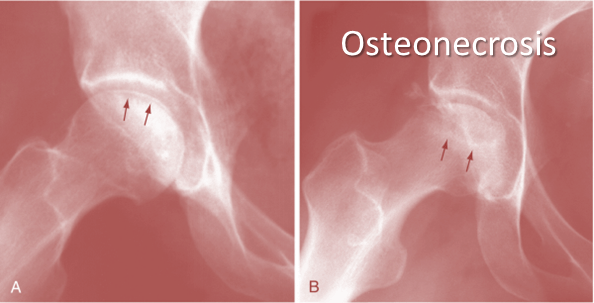Frightening Increase in Osteonecrosis in Patients taking Oral Steroids
Osteonecrosis Steroids Connection? A study just published shows shocking amounts of increase in osteonecrosis in patients treated with oral steroids. Osteonecrosis or avascular necrosis (AVN) literally means “bone death”. This disease usually involves the hip and can mean a rapid collapse of the structure of the femur bone which causes severe arthritis. We’ve known for awhile that the single biggest easily preventable cause of osteonecrosis is the casual use of extremely powerful steroid medications by physicians. These medications are frequently used in patients who have flare-ups of severe arthritis, asthma, or sciatica.This new study now shows that just taking oral steroid medications for up to thirty days (commonly a week to 10 days) increased the likelihood of getting this dreaded disease on average 380%! For those unlucky enough to find themselves on these drugs for more than a year, the likelihood of being diagnosed with osteonecrosis went up 21,200%! As an interventional pain clinic, what’s very concerning to us is that we still see primary medicine physicians placing sciatica patients on these powerful and high risk steroid drugs. We hope this new data will educate physicians to exercise caution before prescribing these drugs, as we’ve seen many patients for stem cell treatment of their osteonecrosis who got the disease because of this preventable cause.

NOTE: This blog post provides general information to help the reader better understand regenerative medicine, musculoskeletal health, and related subjects. All content provided in this blog, website, or any linked materials, including text, graphics, images, patient profiles, outcomes, and information, are not intended and should not be considered or used as a substitute for medical advice, diagnosis, or treatment. Please always consult with a professional and certified healthcare provider to discuss if a treatment is right for you.

